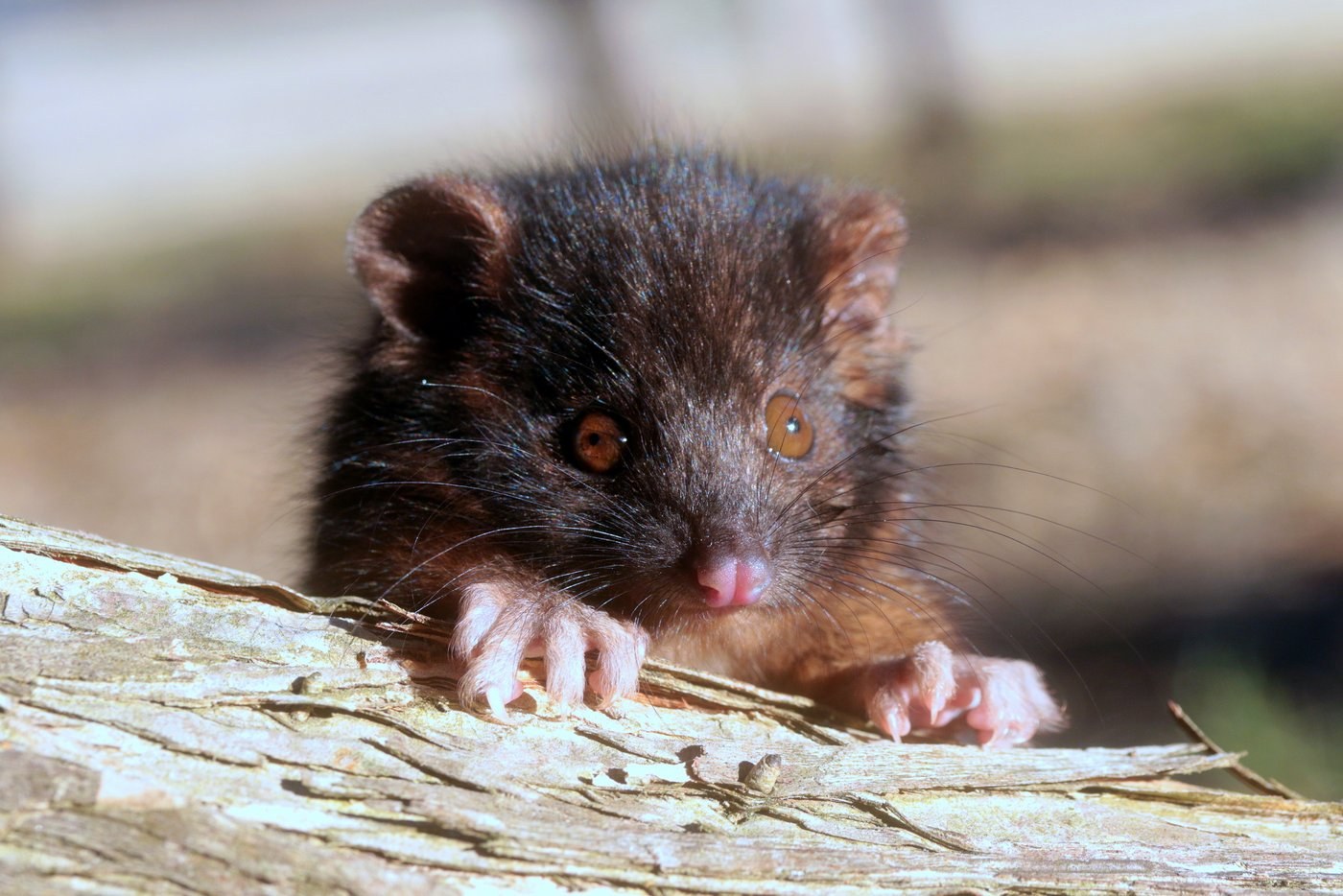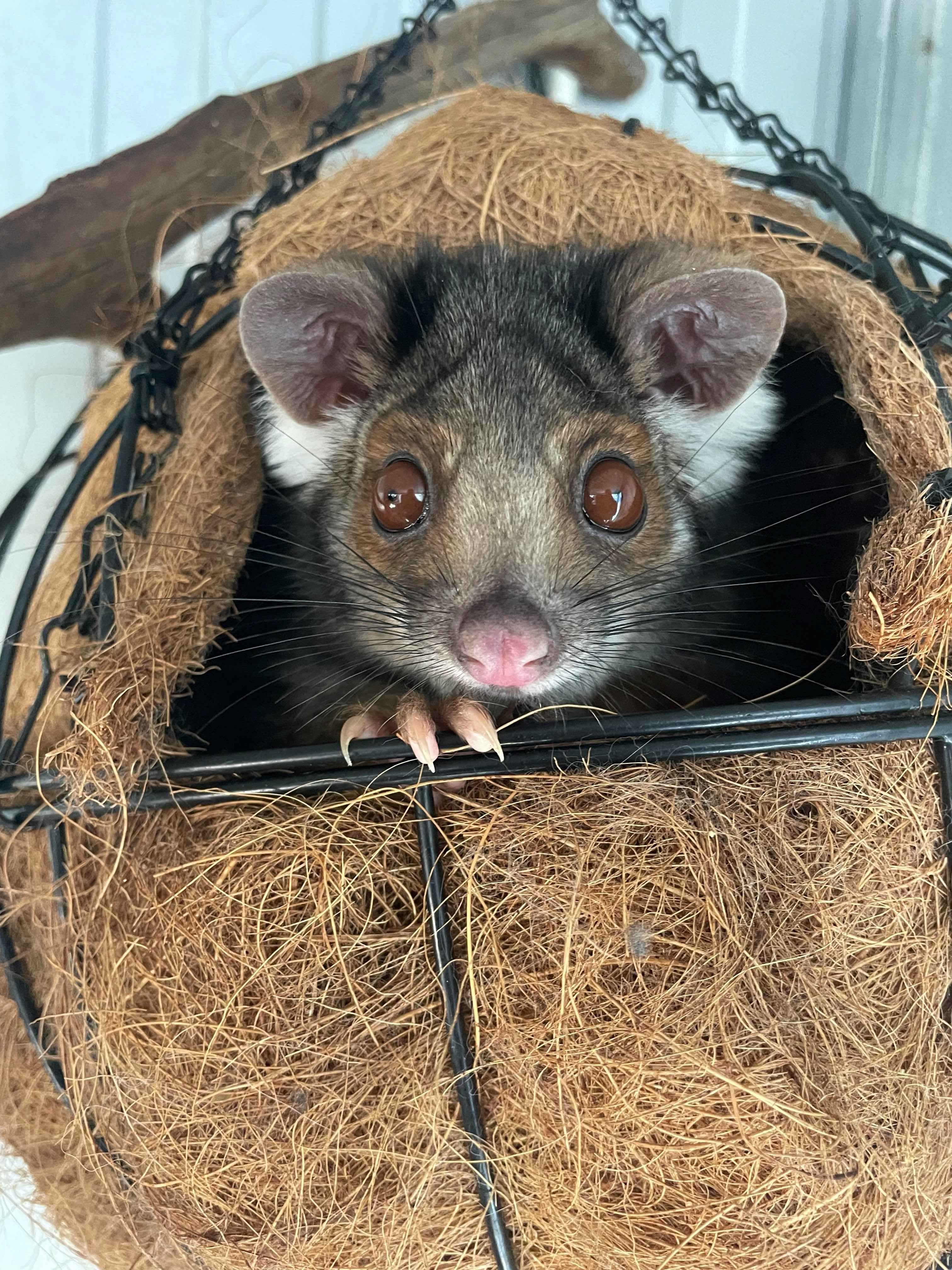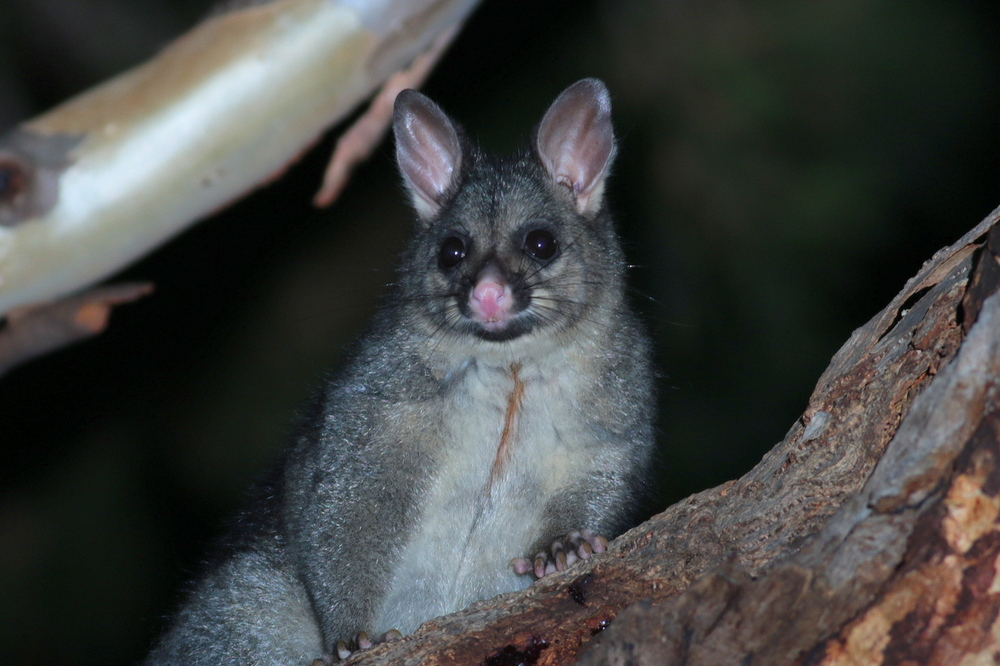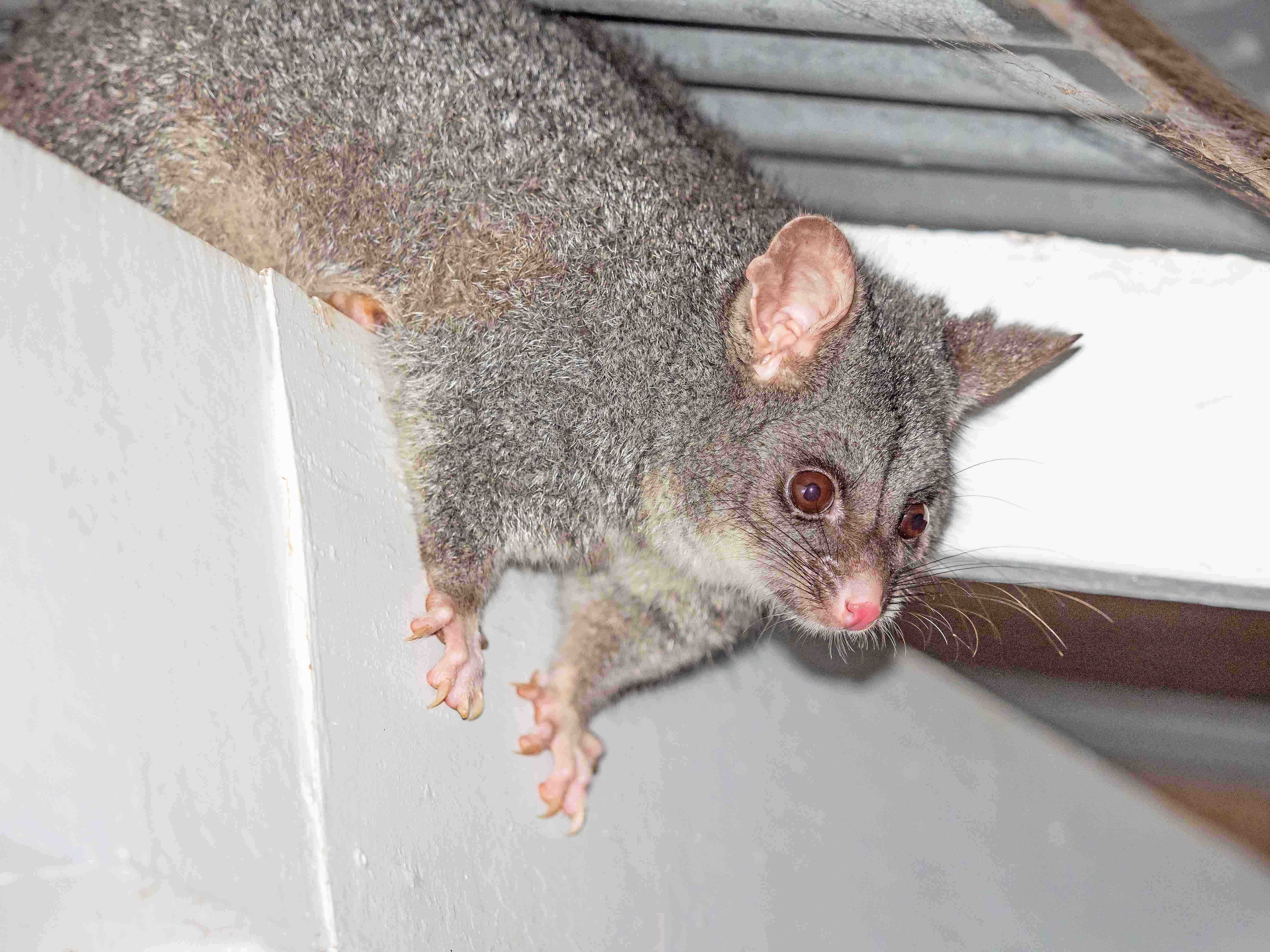Possums have called Adelaide home for hundreds of years. Here’s everything you need to know about these native animals.

Just like other animals native to our city, possums are an important part of our urban environment.
They play an important ecological role in seed dispersal and pollination – and are an opportunity to see native wildlife in your own backyard!
Here’s everything you need to know about the possums living in metropolitan Adelaide:
Which possums are found in South Australia?
There are 5 possum species in South Australia, including the:
- brushtail possum
- ringtail possum
- western pygmy possum
- little pygmy possum
- eastern pygmy possum.
The species most spotted today in Adelaide are the common brushtail and ringtail possums.
The common brushtail possum is approximately the size of a cat at about 1.5kg to 4.5kg, and has prominent pointed ears and a bushy black tail.
The ringtail possum is smaller, weighing less than 1kg, and has rounded ears and a thin tail with a white tip.
Brushtails lead a mostly solitary lifestyle, meaning they will live on their own, whereas ringtail possums are much more sociable. They are typically found in small groups with one adult male, one or 2 adult females, and their babies, aka joeys.

Where do possums live?
As a nocturnal species, possums are most active at night and will spend the day sleeping.
They like gum trees where they shelter in hollows, but when hollows aren’t available, they nestle into crevices in cliffs or even the burrows of other animals.
In metropolitan areas, brushtails are known to use alternative accommodation, such as house roofs or the rafters of a shed.
This is because they’ll typically seek a safe space away from predators and protected from the weather, and roofs provide just that!
Roofs can also provide an easy link for possums to move from one area or tree to another.
Ringtails are less likely to be your new housemate. They gather sticks, bark and leaves to make a spherical nest in a tree (aka a drey nest).
Why are there so many possums in metropolitan Adelaide?
Possums love Adelaide’s urban areas because they are safe to live with lots of food options.
With tree canopies, stobie poles, power lines, roofs and fences often in close proximity, possums can travel around without needing to venture onto the ground – which is great for avoiding predators such as dogs, cats and foxes.
Our local parks, gardens and backyards offer them a diverse range of fruits, vegetables, and other plants to feast on, as well as providing easy access to water.
Are some areas more possum-friendly than others?
Suburbs with large old trees and buildings with easy to access roof spaces are havens for possums.
But neighbourhoods with street trees without hollows, or newer housing with limited access points means it is less likely that you’ll see a possum.

Aren’t possums a pest?
No. But they can be a bit of a nuisance sometimes – especially if they’re partying in your roof all night and tucking into your fruit and veggie patch.
It is important to remember that it is illegal to harm or kill a possum. Instead, we all need to learn to live harmoniously with our local wildlife.
One way to have a better relationship with possums is to understand their behaviours and change spots around your home to reduce their impact like stopping access to your roof.

Can I trap a possum?
You can only trap a possum if is inside a built structure, like your roof, and you have a Trap and Release Protected Animals Permit.
Trapping and releasing can be stressful for possums so you must be able to demonstrate that you have tried other options first.
If you trap a possum, it must be released on the same property, within 50 m of the capture site, within 24 hours. The time of release must be consistent with the possum's usual time of movement, in other words, after dusk.
You can also contact a licensed expert in possum removal, such as a local pest controller to remove a possum from your roof.
Just make sure they hold a Wildlife Management (Controller) Permit, or you can apply for a Trap and Release Protected Animals Permit for them to work at your property.
What do I do with an injured possum?
If you come across an injured possum, contact your local wildlife rescue group or nearest vet as soon as possible. Try searching online for a care group located close to you.
How can I help possums – and why?
Possums are an important part of our urban native environment and are a protected species under the National Parks and Wildlife Act 1972.
In fact, in South Australia brushtails are actually considered a species of conservation concern, meaning they are vulnerable to become endangered.
It’s important to help possums where we can, and you can do this by ensuring there is enough habitat – preferred shelter and food – to keep the population happy.
You can help by:
- Keeping mature trees with hollows in your yard.
- Providing artificial hollows or nest boxes in gardens without trees with hollows.
- Planting their favourite snacks, such as eucalypts and grevilleas.
- Keeping your backyard green.
This blog was originally published in May 2023.